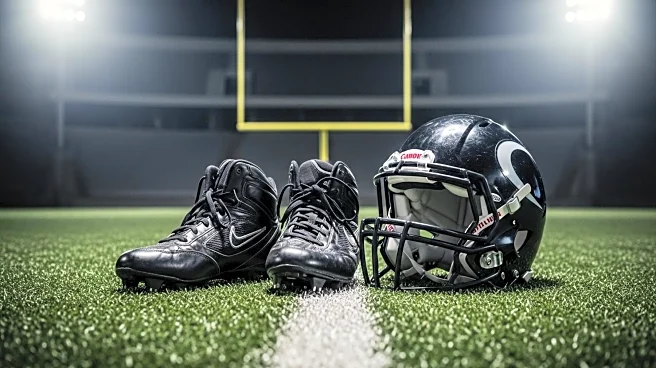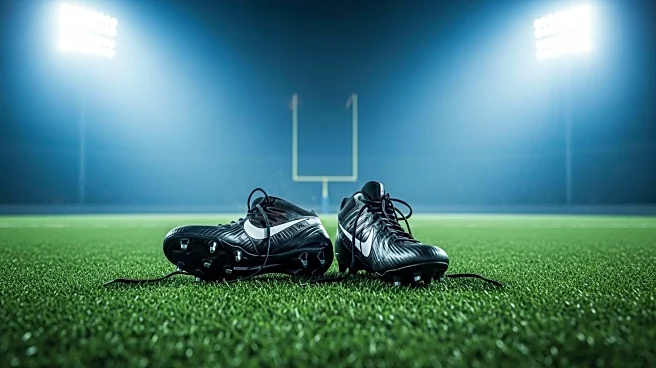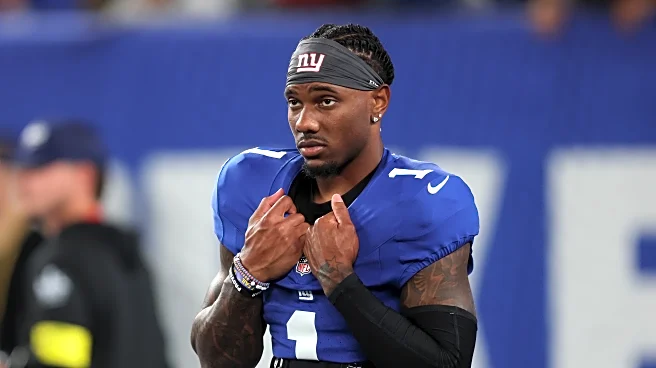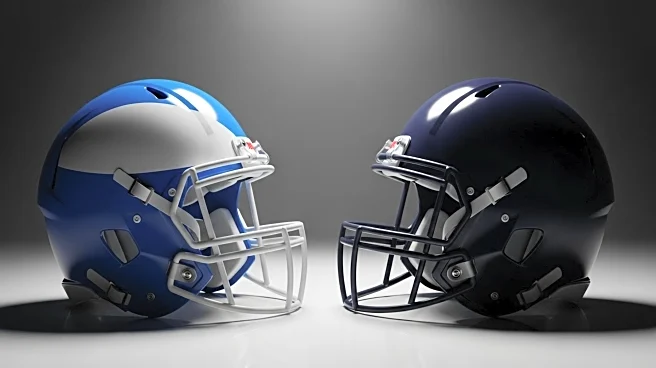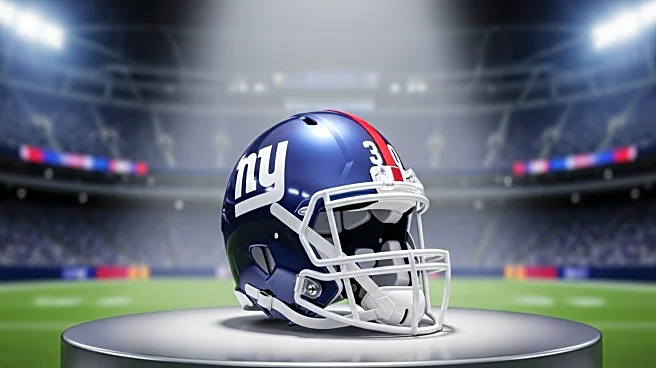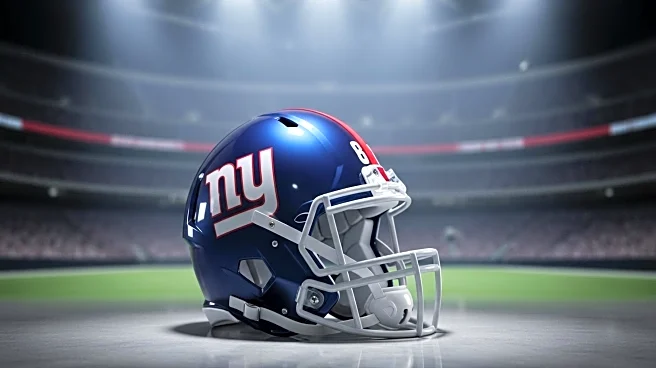What's Happening?
Malik Nabers, a wide receiver for the New York Giants, suffered a severe knee injury during a game against the Los Angeles Chargers. The injury occurred as Nabers attempted to adjust for a deep pass, resulting in a suspected ACL tear. This injury was reported by NFL Network's Ian Rapoport and is expected to be confirmed by an MRI scheduled for Monday. Nabers had been a key player for the Giants, leading the team with 16 catches, 51 yards, and two touchdowns prior to the injury. The potential ACL tear could sideline Nabers for approximately 10 months, according to sports surgeon Deepak Chona.
Why It's Important?
The injury to Malik Nabers is a significant setback for the New York Giants, as he has been a crucial part of their offensive lineup. Losing Nabers could impact the team's performance and strategy for the remainder of the season. The Giants will need to adjust their game plan and possibly seek additional talent to fill the void left by Nabers. This development also highlights the physical risks associated with professional football, where injuries can drastically alter a player's career trajectory and a team's season outlook.
What's Next?
Following the MRI, the Giants will have a clearer understanding of the severity of Nabers' injury and the necessary recovery timeline. If surgery is required, Nabers could be out until next July or August, potentially missing the start of the next season. The team may explore options to strengthen their roster in his absence, including trades or promoting other players. The Giants' management and coaching staff will need to strategize on how to maintain competitive performance without one of their star receivers.
Beyond the Headlines
The injury raises broader questions about player safety and the long-term health implications of football-related injuries. It may prompt discussions within the league about improving protective measures and recovery protocols for athletes. Additionally, the situation could influence contract negotiations and insurance policies for players, emphasizing the need for comprehensive coverage in the event of career-impacting injuries.

